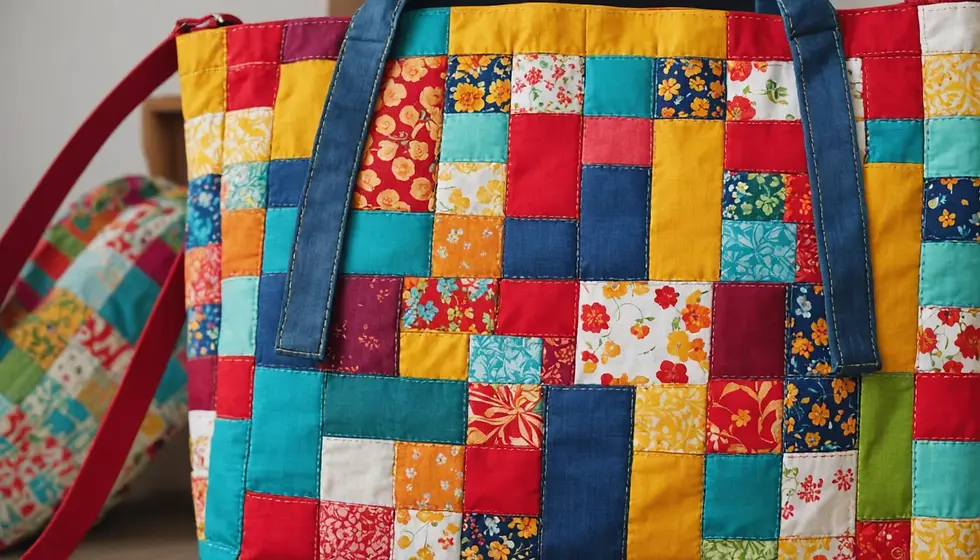Is Your Sewing Machine Acting Up? Here's How You Can Clean and Repair It at Home... And When to Seek Professional Help!
- TSS
- Dec 3, 2024
- 3 min read
Sewing machines are essential tools for anyone who loves to sew. Whether you're an experienced quilter or a beginner making your first project, a smooth-running machine is key to a successful sewing experience. If your machine has started skipping stitches or tangling threads, there’s no need to freak out! In this post, we’ll guide you through the cleaning steps to take and when it’s time to call in the professionals. Gather your supplies, and let's dive in!
The Importance of Maintenance
Regular maintenance of your sewing machine is crucial for long-lasting performance. Neglecting it can lead to frustrating issues like thread jams, skipped stitches, and even permanent damage. For example, a well-maintained sewing machine can last over 25 years, while a neglected one might only function effectively for 5 to 10 years or even less. By dedicating a bit of time to cleaning and upkeep, you can ensure your sewing machine remains a reliable companion for all your creative endeavors.
The First Step: Check the Threading
Whenever your sewing machine encounters problems, always start by unthreading and rethreading both the needle thread and the bobbin. Improperly threaded machines are a common source of errors, accounting for about 70% of all sewing machine issues.
After rethreading, make sure to install a new needle. A worn or damaged needle can cause various problems, from ineffective stitching to fabric snags. For example, if you’re using a needle that has completed 10 to 20 hours of sewing, it’s a good idea to replace it for optimal performance.

Cleaning Your Sewing Machine
Once the machine is properly threaded, let’s focus on cleaning. Follow these steps to keep your sewing machine in excellent shape:
1. Brush Out Lint
Dust and lint collect over time, potentially disrupting machine function. Use a soft brush meant for cleaning sewing machines to sweep away lint from the feed dogs, needle plate, and any accessible areas. This step is vital as a machine may lose about 5% efficiency if left uncleaned.
2. Remove the Needle Plate
Removing the needle plate allows you to thoroughly clean the bobbin case, a common hiding spot for lint and threads. Always consult your machine’s manual for specific instructions. Once the plate is off, gently blow out the lint to ensure a complete clean. For example, many users find clumps of lint weighing up to 0.5 grams stuck in their machines, which can affect performance.

3. Clip Tangled Threads
Tangled threads lead to various issues. Carefully cut any threads caught in the machine, especially around the bobbin case. Ensuring there are no hang-ups significantly aids in smoother operation.
4. Apply Oil Sparingly
After cleaning, consult your sewing machine manual about oiling. Most machines require just a small drop of oil under the bobbin case and on the needle bar. Avoid the mistake of over-oiling, as too much can cause additional problems. A well-oiled machine generally requires maintenance every 5 to 10 sewing sessions for optimal functionality.
By incorporating these cleaning tasks regularly, you can maintain a well-functioning sewing machine for years.
When to Seek Professional Help
Sometimes, despite your best cleaning efforts, professional help is necessary. Here are some signs you should not ignore:
1. Skipping Stitches
If your sewing machine keeps skipping stitches after you’ve cleaned and rethreaded, it might be time to consult a technician for expert assistance.
2. Loud Sounds or Jamming
Unusual noises or frequent jamming often signal deeper issues within the machine. Ignoring these sounds can lead to extensive damage, so it is best to get it checked out promptly.
3. Error Messages or Unexpected Shutdowns
Any error displays or sudden shutdowns point to potential electrical or programming problems that should be diagnosed by professionals.
4. Unpleasant Odors or Smoke
Never overlook burning smells or smoke emanating from your sewing machine. These are serious warnings and should be addressed immediately to avoid fire hazards.
5. Routine Maintenance
Even without visible problems, consider scheduling a professional maintenance check. Staying ahead of potential issues can extend the life of your machine substantially.
Keep Your Machine Running Smoothly
Taking care of your sewing machine doesn’t have to feel overwhelming! With regular cleaning, careful threading, and close attention, your sewing machine will remain a reliable tool for every sewing project. And remember, when in doubt, seek professional help. You’ll save time and avoid headaches in the long run. Enjoy your sewing journey!

We are passionate about sewing and here to support you. Whether you are taking sewing classes or embarking on your projects, caring for your machine is an essential part of the creative process. Now, go confidently into your next sewing adventure!




Comments